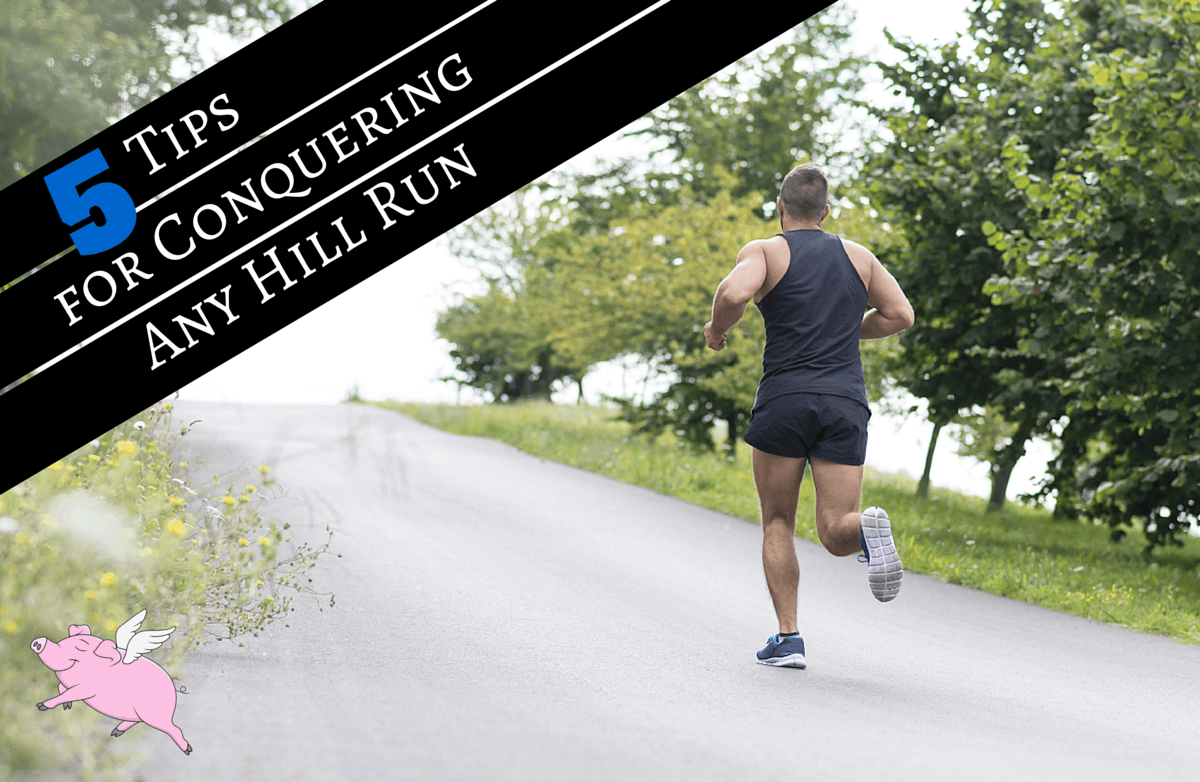
Power Up and Over Any Hill with These 5 Training Tips
The thought of running hills can be very intimidating to both new runners and seasoned veterans. Hills challenge you physically much more than flat terrain running. When I started running a few years ago, I avoided hills whenever possible, which can be a challenge here in Cincinnati--we aren’t called “The City of Seven Hills” for nothing.
More than two years into my life as a runner, I finally attempted my first hilly 15K. I came out on the other side humbled, to say the least. One thing became abundantly clear: To make it to the finish line of my goal race--the Flying Pig half marathon--I would have to add hill training to my running schedule.
In the process of attacking this new training focus, I learned that incorporating the following five factors were instrumental in learning to conquer the hills.
1. Pace: Maintaining your normal pace, or slightly slower than your normal pace, when going up or down hill is key. My natural instinct approaching my first hills was to speed up my pace both going up and especially down, but I soon discovered that was a mistake. I quickly wore myself out by overexerting my body and eventually had to walk up the hill. Also, when running down hills I let myself speed up too much and felt dangerously out of control. Through trial and error, I found that working to slow my pace, focus on the effort expended in trying to keep my energy exerted at a manageable level and not overdoing it is a much better approach. When going downhill, I concentrate on keeping my normal pace and not letting myself go too fast.
2. Posture and Form: One mistake I made early in my attempts at running hills was not paying attention to my form. In an attempt to power up hills, I bent over too far at the waist and lengthened my stride, resulting in a sore back and an inability to get up the longer hills. By shortening my stride and leaning forward slightly, rather than the waist, I am now able to endure longer hills.
Danny Finn, marathon and half marathon head coach at Fleet Feet Cincinnati agrees that proper form is key when climbing hills. His suggestions include:
- Shorten your stride so that your foot doesn’t go out past your knee on extension as over-striding is difficult to maintain when going uphill.
- Be sure to have quick leg turnover (stride rate) and to maintain your cadence to better sustain your pace and make you a more efficient uphill runner.
- Lean in slightly at the ankles. While this is proper form for flat roads as well, it’s even more important to remember during uphill climbs. Plus, it helps allow gravity work for you, rather than against you.
- Drive forward with your arms back. The motion will help you move more efficiently while distributing the stress of running more evenly.
- Lunges, both forward and to the side, will build your quads and glutes while helping with stability.
- Squats help stabilize your knees and increase your leg strength, so you can power up those hills.
- Step-ups are another effective way to improve stability and strength in the legs.
- Deadlifts are an efficient exercise that works nearly every muscle in your body, but particularly your glutes.
4. Practice: When training for a race, one of the first things I do is to make sure I am familiar with the route so I can plan for the course. For the Flying Pig half marathon, I have been looking for hills of varying length and incline to integrate into my normal running routine. Working in downtown Cincinnati puts me in close proximity to several bridges, from which I have created a few three- to five-mile routes that have me going across bridges multiple times on each run. In doing so, I am able to train on shorter, steep hills and descents that lead into flatter roads, allowing for adequate recovery time before heading into another bridge climb.
According to running coach Kyle Kranz, a new runner should practice incorporating hills in two ways. “First, during their easy general runs, simply include some hilly routes. It's important to know that your pace will decrease greatly if you stay at the same easy heart rate or effort level, and that's okay,” he says. “For hill workouts, start with short, 10- to 30-second hill reps and gradually extend the distance and number of these. My favorite workouts are what I refer to as ‘strength endurance workouts,’ and they include max hill sprints ranging from three to eight reps and one to four minutes long. At the top, you do squat jumps and deadlifts, then jog back downhill for recovery.”
5. Stretching: While it may have started as something I had to consciously integrate into my routine, stretching has since become a habit. After every run, I spend 10 to 20 minutes stretching my legs, focusing on my quads, hamstrings and glutes. This becomes even more important as your runs become more challenging, so I recommend sticking with it throughout your training.
With a bit of planning, focus and hard work, running hills won’t be as daunting. My upcoming Flying Pig race has some very challenging hills, but by following through with my training, strengthening and stretching, I am gaining strength and confidence every day.
Kranz summed it up perfectly when he said: “[Hills] may look intimidating, but they're always worth it. The view from the top is great and the satisfaction of doing it is even better.”
My Training Update:
I feel as though my training plan is really paying off. This past weekend I ran another popular Cincinnati race, the Heart Mini 15k, and it went better than I expected. This year, the course designers added even more hills to an already incredibly hilly course, but I completed the race with a personal record and I felt great afterward. What a confidence boost! I am looking forward to pressing on in my training for the half marathon over the next several weeks.
Do you have any tips for running hills that work for you? Let us know in the comments!
Join us every other Tuesday as we update you on our Flying Pig half marathon training, and help you get prepared for a big race. Follow along on our journey on Instagram using the hashtag #runsparkrun.
Posted 3/15/2016 12:00:00 AM By: : 27 comments 73,876 views

Mike Lost 67+ Pounds Using SparkPeople--and Now He Works Here*
Editor's Note: By popular demand, our Behind the Scenes at SparkPeople feature has returned. Today we're interviewing Mike, who joined the SparkPeople team earlier this year. In addition to being a SparkPeople employee, he used our program to lose almost 70 pounds (and he's not done yet)! Mike, who credits daily use of SparkCoach for his success, learned to love running. Read his story!
Name: Michael Honkomp (HONKUS)
Position at SparkPeople: Ad Operations Specialist
Age: 38
Family: Married to Erin for 14 years, father of two girls ages 7 and 4
How long have you worked for SparkPeople? 4 months
Tell us your proudest accomplishment at SparkPeople or a fun fact about your job: My proudest moment happens each day when I walk in the door for work. I do everything I can to help SparkPeople spread its message so it can help others as much as it has helped me.
How do you stay in shape?
I do at least 30 minutes of exercise each day: walking, running, free weights, floor exercises. I also eat a well-balanced diet, keeping within the calorie range I have set on SparkPeople.
What's your favorite food?
Pad Thai with tofu
What's your favorite indulgence?
I like to pour a modest glass of scotch while the wife has a glass of wine and just hang out.
How do you feel when you exercise?
Simply put, I feel alive. After a run, when I'm breathing deeply, dripping with sweat, and slightly tired, it makes me feel more alive and in tune with myself than anything else.
What do you do to de-stress?
I read books. I bought a Kindle a few years back, and have made great use of it.
What is your passion in life?
My family is my main passion. Providing them with a home and a happy, healthy lifestyle has been what keeps me going each day. I can’t find any joy greater than the smile and laughter of my girls.
How has working at SparkPeople affected your life?
I love the mission of SparkPeople. It started to affect my life long before I started working here, but after working here and seeing the employees truly living it day by day has strengthened my resolve even further.
Have you gained or lost weight since starting here?
I have lost about seven pounds since I have started, and I plan to lose 13 more to reach my goal.
Have you started any new habits?
Posted 10/9/2013 6:00:00 AM By: : 36 comments 28,219 views




